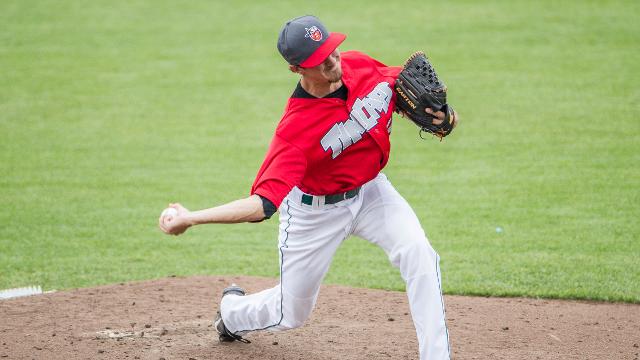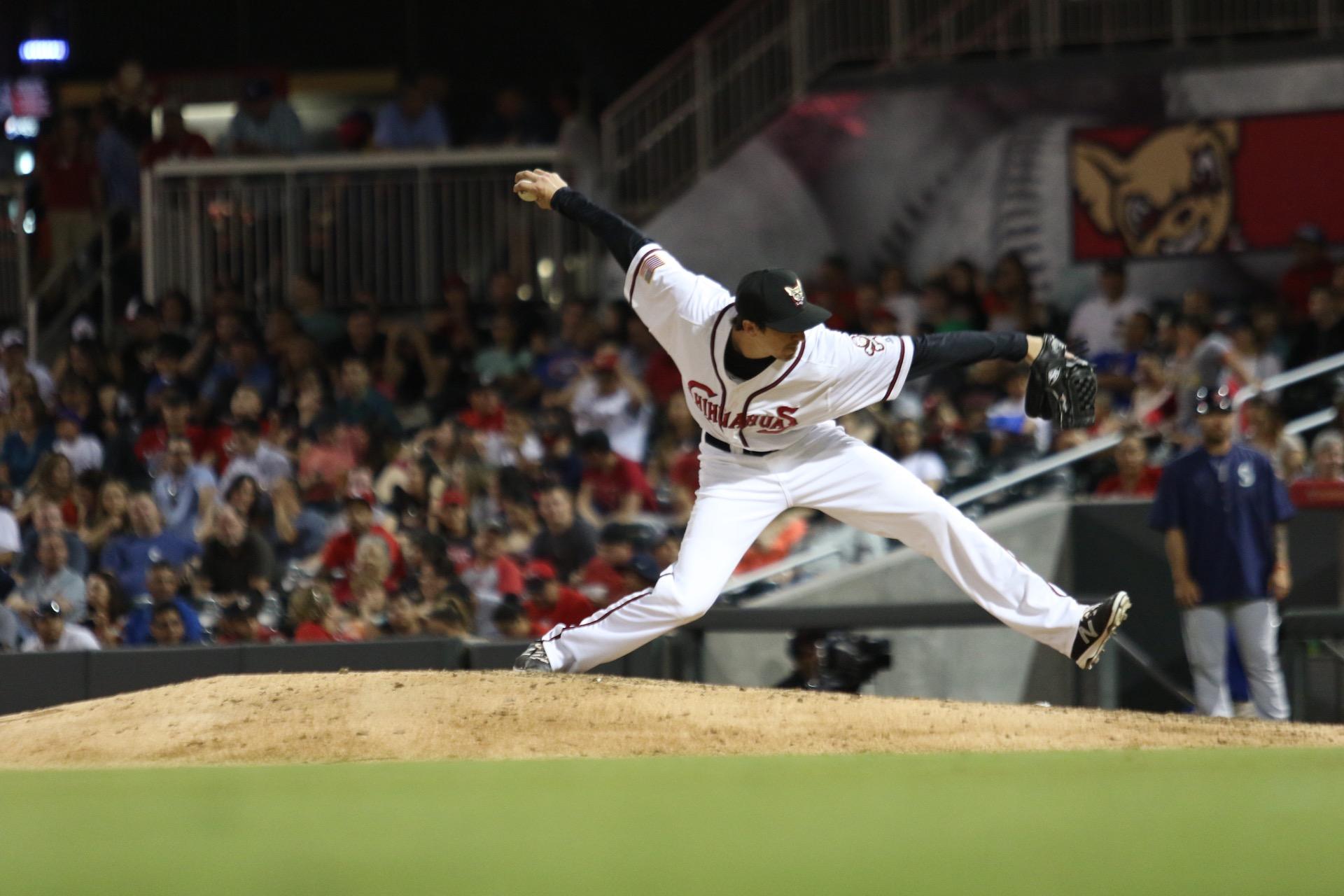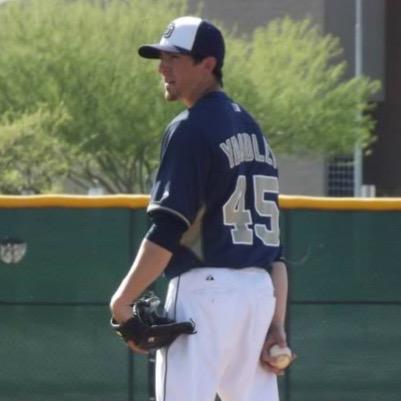Eric Yardley Interview: Opportunity in Every Difficulty


It is July in the sweltering summer of Alpine, TX, and the phone is ringing.
On one end sits Eric Yardley, a pitcher for the Trinidad Triggers of the Pecos League, an association of independent baseball clubs spread from California to Kansas. He is a recent graduate of Seattle University who opted to forgo a Master’s degree in education (for now) for the possibility to be called a professional baseball player and chase the chance to continue his childhood dream.
On the other sits Justin Baughman, a scout assigned by the San Diego Padres to cover the Northwest region that Yardley calls home, and one who has had his eye on the right-handed hurler for a few years now.
He has good news.
“He basically told me that a spot had opened up within the organization, and asked me if I could get to Phoenix (home of the Padres’ rookie ball affiliate) by the next day to sign a contract with the team,” said the now 26-year-old Yardley. “I instantly got on the phone with my agent and family to figure out a way to make things work logistically. I ended up getting dropped off by the Triggers at an airport in El Paso so I could fly to Arizona.”
The rest, as they say, is history.
In the years since that fateful day in 2013, Eric Yardley has gone from a “let’s see if this works”, undrafted free agent signee, to one of the organization’s rising stars and a potential piece of the Friars’ bullpen formula this upcoming season.
Counting Brad Ziegler and Darren O’Day among his muses, the Washington native has used a heavy sinker and darting slider, all coming from a sidearm motion that resembles a Frisbee fling more than a pitching delivery, to find success throughout his professional career. In 70.2 innings last season between San Antonio and El Paso, Yardley twirled to a 2.93 ERA and a 1.29 WHIP. His repertoire requires a reliance on command and ground balls, and Yardley has excelled at both as he’s climbed the professional ranks; he has averaged 3.02 ground outs per fly out and a measly 2.0 walks per nine innings during his minor league career.
I had an opportunity to talk with the Miracle-loving, steak-eating Jeremy Taiwo fan (yeah, I had to ask Google too) about his experiences in baseball and goals for this upcoming season. Not only does the man have a potentially bright future with the big league club, but the path he took to where he is today is sure to inspire casual and hardcore fans alike. Enjoy the interview, and, of course, thank you to Eric for taking the time to talk.
You’re from Washington and played college ball at Seattle University. What was it like to be a Redhawk and what were some of the biggest takeaways you had from your time there?
My first year at Seattle was the program’s first season in its return to Division 1. As a result, we really didn’t have a baseline, and just went with the guys we had. Being a part of building the program back up from the bottom while learning and growing from Coach Harrell and the other guys on the staff really helped me to grow up a lot as both a baseball player and a person.

You were a two-way player in high school (and a successful one at that). Did Seattle ever talk to you about playing both ways in college? What eventually led to you transitioning to the mound full-time?
Because the program had minimal scholarships to use to recruit players (only 6.5 instead of the 11.5 typically given to Division 1 programs), I was recruited to play both ways. I spent my first two years a two-way guy, playing infield and pitching. However, as things went on, I started to realize I wasn’t the same player I was in high school and wasn’t as confident in my offensive abilities as I needed to be. Basically, I forgot how to hit. Luckily, I was able to take some strides forward on the mound and find success there.
When did you develop your more unorthodox sidearm motion?
It happened between my sophomore and junior years of college. We had a lot of good recruits coming in who were expected to have an instant impact. Our pitching coach approached me and basically said I wasn’t going to be able to play unless I found a different way to remain competitive. It was his idea to drop down and start throwing sidearm. I attacked that new arm slot in the fall, and it’s worked out pretty well since.
While at Seattle, you were given the Cam Christian award twice. Tell me a little about where that award originated in the program and what it meant to you to win it.
Cam was a junior college transfer and an all-around great guy. He was also encouraged to drop down (mechanically), so we spent a lot of time together. After fall ball, he went to a wedding in eastern Washington and was killed in a drunk driving accident. He had meant so much to the program as a competitor, student, teammate, brother, and person; he was irreplaceable. Coach Harrell took on the task of designing an award to be voted on by the team that would account for all of Cam’s contributions, commitment, and leadership on and off the field. I ended up receiving it in each of its first two years of existence. It was a huge honor because it goes beyond what happens on the field and focuses on what you mean to your team and community. I’d definitely say it was the most meaningful award I’ve ever gotten.
After college you played independent ball in New Mexico. How did that situation come about? Describe the experience of playing in the Pecos League.
Right after the draft, I was understandably disappointed. I was still in school when I got the call from the Taos Blizzard. I didn’t know anything about the team or the league, but they were looking for players and it was a chance to say “I’m a pro baseball player.” After talking with my parents and my girlfriend at the time (now my wife), I decided to go out there to finish the summer.
The whole experience is different from the minors and most independent leagues even – definitely far from the glamorous lifestyle of a professional athlete. Once I got the call from the Padres though, it allowed me to have the perspective that every step is a step up, and that definitely helped my mentality as I grinded and tried to work my way up the ladder.
PAGE 2 LINK BELOW
Noah is a current undergraduate at the University of San Diego. In addition to his classes as a Business Economics student, Noah serves as the scouting director for the nationally-ranked USD baseball team and as an NFL correspondent with The Mighty 1090. You can follow him on Twitter @thebackseatlamp